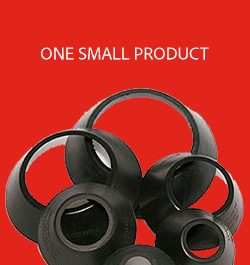Eric Younkin - MTL Holdings Launches a GT1 XL Gutter - PODCAST TRANSCRIPTION
August 5, 2023 at 5:00 p.m.Editor's note: The following is the transcript of a live interview with Eric Younkin from MTL. You can read the interview below or listen to the podcast.
Intro/Outro: Welcome to Roofing Road Trips with Heidi. Explore the roofing industry through the eyes of a long-term professional within the trade. Listen for insights, interviews and exciting news in the roofing industry today.
Heidi J. Ellsworth: Hello, and welcome to another Roofing Road Trips from RoofersCoffeeShop. My name is Heidi Ellsworth, and we're here today to talk about gutters. Gutters are one of the most important parts of any building to keep that rain and wet off of your head as you're walking out, but also just for the protection of the building overall. Talking about protection, we have the experts from Metal-Era, Eric Younkin, to talk to us about GT-1 gutters and some new products that are out there.
Eric, welcome to the show.
Eric Younkin: Thank you, Heidi. Glad to be here. Excited to talk about some new and exciting things coming from MTL.
Heidi J. Ellsworth: Yeah. I am very excited, too, and you know what? I did say Metal-Era. I should have said MTL at the very beginning because there's Hickman, there's Citadel, there's Metal-Era. You guys just have an amazing company that has come together over the last couple of years.
Eric Younkin: Yeah. The MTL is the holding company for three brands, Metal-Era and Hickman Edge Systems, both focused around perimeter edging, whether that be fascia gutters, downspouts, water control, all the way to Citadel architectural products which has been new to the family, about a year ago, and that's our first attempt to jump off the edge of the roof onto the walls. They're an ACM manufacturer specializing in all components of ACM, A lot of sticks and sheets, fabricated systems. Integrating them into the family has been exciting, and we look forward to expanding the wall portfolio with Citadel.
Heidi J. Ellsworth: That's great. That's great. Well, I have a lot of questions for you, Eric, but before we get started, why don't you start out with an introduction. If you can introduce yourself, and you already talked a little bit about MTL, but just what you do at the company?
Eric Younkin: Yeah, so Eric Younkin, I am the vice president of products and engineered services. We have a team of product managers that are looking to innovate new products and services to the market as well as provide technical assistance. We have an engineering team in-house looking at ways to design specific details for roof plans and then a product marketing group that is really out promoting and pushing products into the market to show value to the contractors, whether that be higher performance with wind meeting building code, whether that be ES-1 or GT-1 standards and really, today, most importantly, providing labor savings to the contractor. Labor is a big concern in the marketplace today, so what can we do to help our contractors, our installers save on the labor side of the business so they can get off the roof faster and get onto the next roof?
Heidi J. Ellsworth: Yeah, excellent and so important today, everything that's going on today. I want to start just with some of the basics. You can help me out here, but when you're talking about approvals, we talk a lot about GT-1, what is GT-1?
Eric Younkin: That's a great question. A lot of people are familiar with ES-1 which has become the standard. It's written into building code. It's part of Factory Mutual. It is the requirements that are needed for any fascia or coping system to be installed anywhere in the US. It's been around for a long time. GT-1 is basically the gutter version of ES-1. GT-1 was just recently adopted by IBC in 2021, so we're starting to see states adopt the 2021 code. To date, I believe there are 16 states that have adopted this code. In addition, there are certain entities that have also adopted, so maybe not the state, but maybe cities or municipalities or localities that have adopted as well such as Denver, Colorado, Portland, Oregon. Although Texas has not adopted it, Austin, Dallas, Fort Worth and San Antonio have all adopted the 2021 code.
As ES-1 is in code, so is GT-1, so we're going to start to see that any gutter assembly that is installed on a roof is tested in accordance with GT-1. The primary objective here is to ensure that the gutter stays intact through any type of natural occurrence, whether that be wind, storms of the such or snow load, that's a big issue as well, that the gutter stay intact and they really protect the roof. We want to keep the roof intact especially during storms. GT-1 is the attempt to make sure that we secure our perimeter gutters, therefore, our perimeter roofing in accordance with what we think is required by code.
Heidi J. Ellsworth: Right. Excellent. Okay. As you talked about earlier, you have a whole team of engineers, product managers really looking at this with huge amounts of experience in the roofing and building envelope space. You've come together and are bringing a new product to market that is exceptional and fits right into what you were just talking about for code compliance and really being what people need, what contractors and what the building owners need for protection of that building. Tell us about this new launch.
Eric Younkin: Yeah. The new launch is our XL Gutter, XL, extra large. Traditionally, gutters have been in that, somewhere, five, six, seven, maybe eight-inch range. As we see buildings getting bigger, we're starting to see larger and larger gutters over the years. Now, 10, 12-inch gutters are very common. As GT-1 was being adopted into code, we wanted to make sure that we had a gutter that met code requirement. We set out and we quickly found out that the use of external brackets for larger gutters was not going to cut it when it came to GT-1 testing, so we put our engineering team and our product team at task and said, "We need to have a gutter that is large, XL." This gutter goes up to 14 inches. With this particular gutter, we go from eight to 14 inches, so it has to be large because it has to handle the water flow for big buildings. It has to be GT-1 tested and it has to be contractor-friendly to apply.
Those were our three main objectives with this new product, and I will tell you that our engineering and product teams really hit the ball out of the park with this one. We recently have done some jobs, and the feedback we've gotten from contractors has been absolutely phenomenal. Contractors are saying they're seeing up to 60% labor savings because we're able to eliminate external rackets from these larger gutters. We do that by a specific design where we're utilizing a lower mounting hanger and a gutter cleat to engage the gutter.
What's really, really unique about this is we're able to minimize the amount of time the contractors are hanging over the edge of the roof by utilizing this lower mounting hanger and this gutter cleat to engage the gutter fast and tack it into place to hold it so, that way, we're not hanging over, putting in tons of fasteners and things like that. We're really trying to minimize that amount of time.
Safety is a big concern, so it really helps with safety, but really what that does is we're less time on the roof or on the edge of the roof. We're speeding up the process. Again, this particular job I did down in south Florida, typically, a five-man crew, and he says that he was almost doubling his production with less people. Again, the feedback has been absolutely phenomenal.
The other thing we did is we came up with what we call our mounting arms, or we call it our Rauch Arm. One of our engineers, Aaron Rauch, developed it this way to really kind of... We put this lower mounting hanger in the right spot, no guessing, no chalking lines. The contractors can just do it very, very easily. The feedback's just been awesome, so we're really excited. This is our eight to 14-inch gutter. In addition, we have our WR gutter, which is our wind-resistant gutter which is an internal extruded aluminum bracket, no external straps again, and that goes from five and a quarter up to seven and three-quarter. We're happy that we have a gutter assembly that's GT-1 tested that goes from five and a quarter-inch all the way to 14 inches.
Heidi J. Ellsworth: That's amazing. I saw the video. It's on RoofersCoffeeShop on our directory, and we're getting it out there. I've seen the video, the installation. It's kind of an animation, and I was blown away. I thought it was so cool.
Eric Younkin: Yeah. The animation is really good. It really gives you a step-by-step process. A lot of the assembly of the gutter is actually done on the roof, so not on the edge so, that way, we're minimizing that amount of time. We utilize a three-piece internal bracket. When you talk about GT-1, it's really I'd say the brains behind passing the test because GT-1 has three particular test standards, G-1, G-2, and G-3, and those are downward force, upward force, and outward force, so all the forces that would be exerted on the gutter. It's not easy to meet all of those pressures. Sometimes, the downward might be easy to meet, but the upward becomes a little harder especially with the external brackets. To use this internal bracket, this three-piece bracket, it comes preassembled, slide it in. It really makes it easy on the roofer.
Heidi J. Ellsworth: That's great and ingenious. I love it. I know we talked about the installation, and you talked a little bit about that, but I know when I was watching that, and you already mentioned it's less people, just walk us through that and what that means for where everybody is on the roof and how much safer it is.
Eric Younkin: Yeah. First again, you're not off the edge, you're not hanging off the edge, so it's automatically safer. When we did this job, it was a crew of three instead of a crew of five. They were able to assemble it, slide it right into place. Once you put the gutter into the lower mounting hanger, you could put a couple of nails into the gutter just to hold it in place while you continue to add sections, and then you could come back and then attach your three-piece bracket which is really going to tighten up the gutter.
I will tell you, it was really fun to be on the roof while watching the installers do this. When they went in and they put that fastener into that bracket and screwed it into the nailer and watched that gutter just really tighten up, I just got the look and the comment, "Whoa, that's strong." The guy said, "Can I hang off of it?" and I was like, "Well, yes, you can, but I wouldn't recommend it." It is that strong. I mean, I've seen these gutters filled up to the top, 14-inch gutters filled up to the top, frozen, so massive amounts of weight from ice. This is a test. This is not a rooftop. Again, a test we did outback at our facility where we intentionally overflowed it and froze it, and no sign of failure from that amount of weight, so extremely strong.
Again, the safety of it is keeping people away from the edge as much as possible to minimize it and then also being able to install more in a single day, getting the roofer off of the job faster. The elimination of the external bracket is key, having to have the gutter sit directly into that bracket. A lot of times, there's repositioning of the bracket, depending upon how that gutter sits. We've eliminated that. Once we set the gutter into our lower mounting hanger, it's set, it's flush. The Rauch Arm is putting it in the exact spot in accordance with the top of the nailer, so the gutter is in the ideal location, so eliminates a lot of guessing, no chalking lines. That Rauch Arm, just so everybody understands, it sits on top of the nailer and holds the lower mounting hanger in place while it's being installed.
Heidi J. Ellsworth: Wow. Wow. Again, anybody who's listening to this, please go to RoofersCoffeeShop to the directory to check out the animation of the video. It brings it all together. Although you do a great job, Eric, on explaining it, I have this whole visualization going in my head. Okay, and this is another simple question, but as a building owner, what are the benefits of installing an eight-inch to a 14-inch? I know you're GT-approved all the way across, but what is some of the advantages to installing that eight-inch to 14-inch instead of the smaller gutters?
Eric Younkin: A lot of it's going to depend upon doing calculations for what size of gutter you need based upon the amount of water you need to handle. When we get into these larger roofs, you're starting to see a lot more water get into the gutter, so we want to be able to make sure that we handle that.
The other benefit is, as we get into larger gutters, we could start to minimize what we call the number of drops or downspouts. Typically, on a smaller gutter, you're going to have to have a lot more downspouts, which cost money, cost labor, and where do you put them on a building? Some people don't want that many downspouts on a building. When we get into a larger size gutter, we could start to minimize the number of downspouts, so actually save on the installation, the overall installation, because we're not installing multiple downspouts. Minimizing downspouts is key because we can go, I believe, up to a 12-inch downspout, and so we're getting bigger downspouts and controlling that water flow.
Heidi J. Ellsworth: Yeah. That's great. Okay. Again, I'm going to bring this from a building owner's perspective, but one of the things with the XL Gutter is also just overall labor savings and time spent on the job. I mean, you guys, we talked about 50 to 60% savings. That's huge when you think about the size of some of the buildings and what needs to go on with the gutter, so talk a little bit about that savings aspect.
Eric Younkin: Yeah. When we did this, our target was we wanted to see increased output from the installer. We were hoping a 15 to 25, maybe 30% increase. We were really startled after doing a couple of trial jobs and talking to the contractor, and they literally said, "50 to 60%," and I kind of did the, "What? What? What?" and they were like, "Absolutely." We continued to follow up as the job continued because, when we went on this job, we said, "Okay, let's take our time. Let's show you the components because this was new to them." We started going through it, and we interrupted their regular production on how they would typically do a gutter. At the end of the day, after starting later, getting on site, going through everything, having to get off the roof earlier because of some weather, they actually installed more, and then so the next day we were able to get out there and start fresh and let the crew get into their groove.
These are not MTL, Metal-Era, Hickman numbers when we say 50, 60%, but these are directly from the mouth of contractors who are actually installing it. I like to say it blew my socks off and it's real. Again, we were targeting 15 to 20%, we would've been thrilled. To see that big of a labor savings is awesome.
Heidi J. Ellsworth: The contractors just have to be amazed that you're able to bring this kind of savings to them.
Eric Younkin: Yeah. When we start showing contractors, they really are like, "Whoa." There's a lot of questions. It's new, so, of course, they're going to question it, but everybody that's touched it and seen it, has installed it has been impressed, has loved it, has experienced some level of savings. I'm not going to say every job is going to save 50 to 60%, but there is definitely labor savings in this. The job we did was, I think it was 1600 linear feet, so pretty big building. You'll start to see some of that information come out. Our marketing group is continuing to funnel out social media posts, and some of that will be coming out with the job that we'll highlight down in Florida that was pretty key for us.
Heidi J. Ellsworth: Perfect. We'll have that case study on RoofersCoffeeShop, too, because really, when you look at that and just listening to you and thinking through this as a contractor, you think about labor savings, overall savings just on installation and then on safety, which is a total risk mitigation. When you really put all of these things together, it makes sense, and it is going to be the future of gutter installation.
Eric Younkin: Yeah. The other thing, I can't believe I didn't mention this, but when you eliminate an external bracket from a gutter, and this sounds really, really cheesy, but when I look at now at a gutter and I see an external bracket, I'm like, "Ooh, it doesn't look as pretty as this other gutter," because we're eliminating the external strap. We don't have to post-paint a 125 aluminum or a heavy steel or an eighth-inch steel bracket that has to go out, get bent, get post-painted, which is time and money. All of this stuff that we're talking about is standard pieces that we can fabricate in our shop. There's no matching of colors. All the colors are going to match from all the different components. It looks really nice. No external straps, larger gutter, looks very uniform, so, aesthetically, it really does show a difference side by side to external brackets compared to this internal bracket with the lower mounting hanger.
Heidi J. Ellsworth: That makes a difference. That's customer satisfaction at the end of the day.
Eric Younkin: Yeah. Being in the roofing industry for a while, you get excited over how pretty a roof looks now. We get excited at how pretty a gutter looks.
Heidi J. Ellsworth: Yeah. I like it. I can't wait to see more of this. Okay. How can roofing contractors start purchasing, training, installing? What's the process? How can contractors get involved with this great new product?
Eric Younkin: The XL Gutter is available through both of our brands, both Metal-Era and Hickman Edge Systems, so you could work through your local Metal-Era or Hickman Edge Systems representative or you could go to either of the websites. All of this is available on our website. We're selling this in one-inch increments, so 8, 9, 10, 11, 12. That's our standard sizes. It's as simple as going into the website, clicking on our products under our water control section, which carries all of our different gutter and down spot options, and filling out a print approval and sending that into the corresponding brand's email. Our quote process is down to within 35 minutes so we can get your quote back right away. Again, not having to go through external processes for painting and matching, our lead times are minimized quite a bit without having to rely on that.
Heidi J. Ellsworth: That's great. That's great. Eric, thank you. What a great product. Congratulations on such a successful launch and such a great product that's really going to make a difference in people's lives.
Eric Younkin: I will tell you, the thanks goes out to our product and engineering team. We thought this was an easy project, but when we got into the true engineering and the testing to see how it was going to test according to GT-1 standards, we ended up having to go through quite a few iterations to dial this in. This is patent pending. There's a lot of technology, a lot of intellectual property that goes into this. We're excited to bring this to market, help our contractors, help our building owners, help our consultants design these roofs. We're excited and we appreciate the opportunity.
Heidi J. Ellsworth: That's great. That's great. Well, thank you again for being on today, and congratulations. I will say, through Roofing Technology Think Tank, I get to come up to your plant in September and I get to see all this. Everyone who's listening to this podcast, stay tuned because we'll have some video. We'll definitely be doing possibly some live conversations from Metal-Era in Milwaukee in September.
Eric, I look forward to seeing you then.
Eric Younkin: Thanks. Look forward to seeing you, too. Thank you.
Heidi J. Ellsworth: Thank you, and thank you all for listening. Another great product, it's really going to make a difference in your low-slope commercial buildings. This is pretty amazing. Thank you so much for listening. Please check out all of our podcasts under the RLW, the read-listen-watch section, under podcasts in Roofing Road Trips or on your favorite podcast channel. Be sure to subscribe and set those notifications so you don't miss a single episode. We'll be seeing you next time on Roofing Road Trips.
Intro/Outro: Make sure to subscribe to our channel and leave a review. Thanks for listening. This has been Roofing Road Trips with Heidi from the rooferscoffeeshop.com.























Comments
Leave a Reply
Have an account? Login to leave a comment!
Sign In